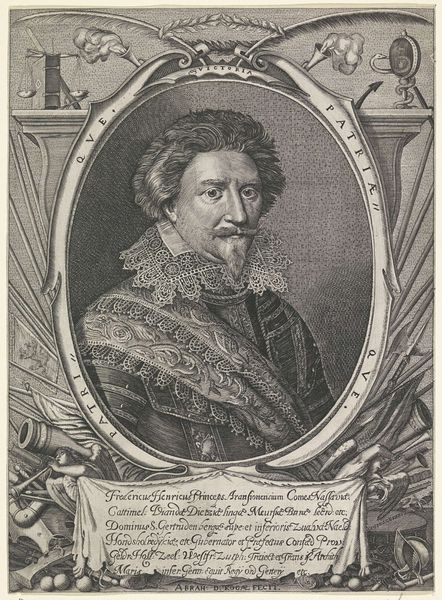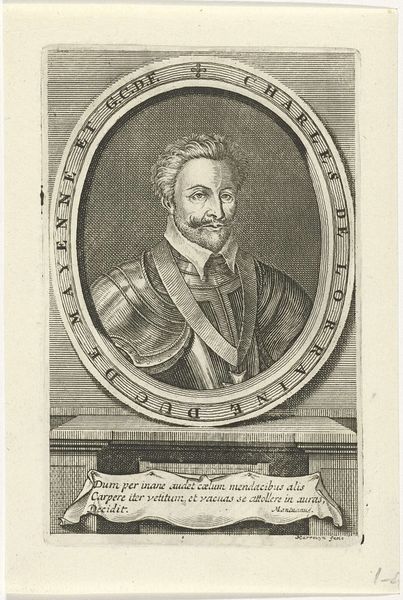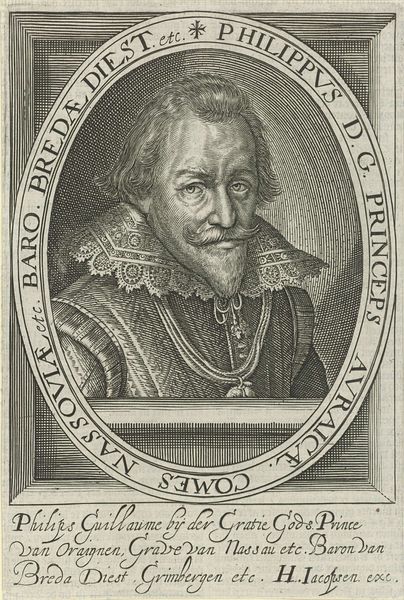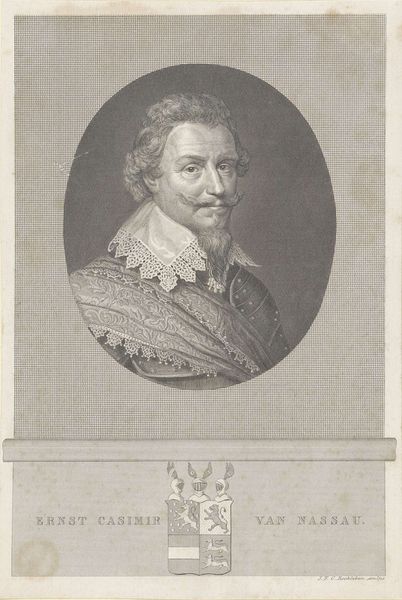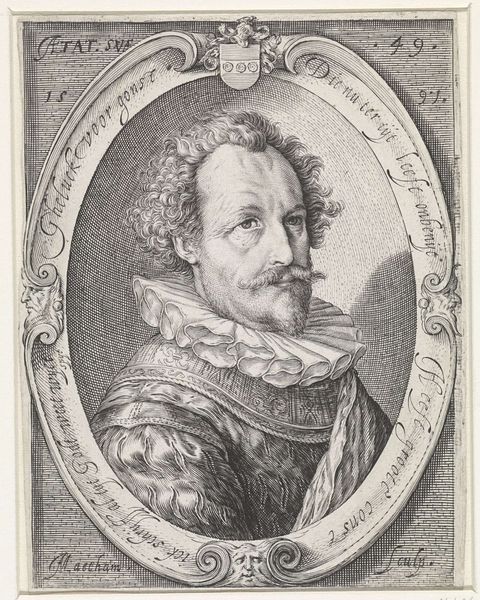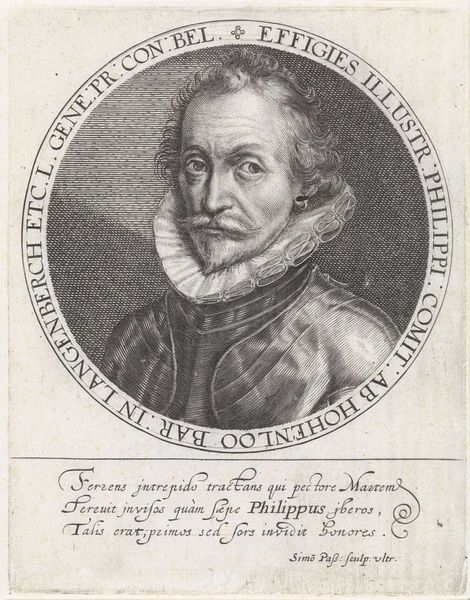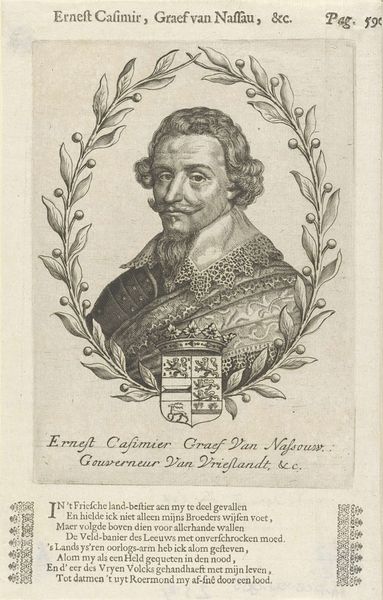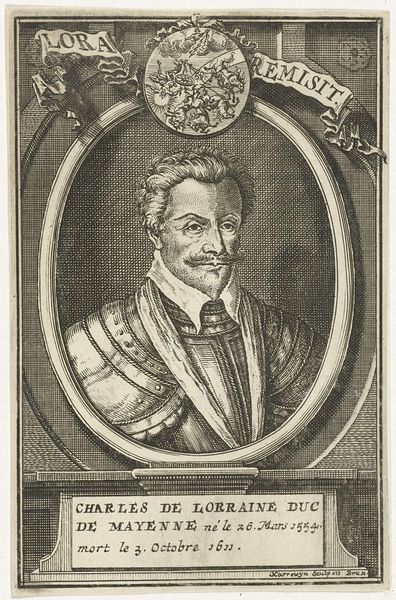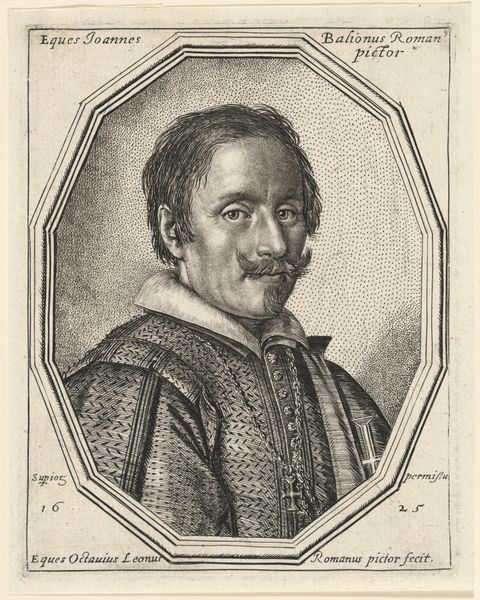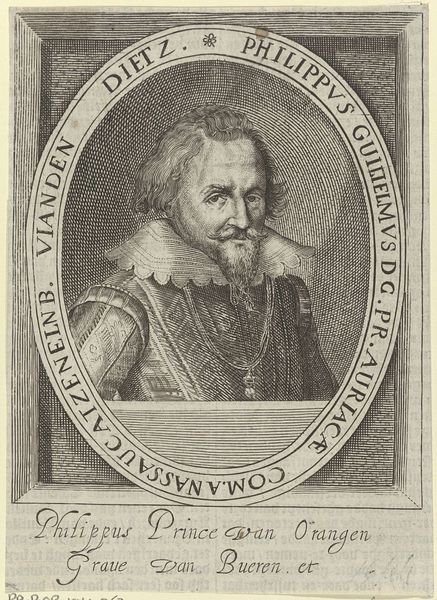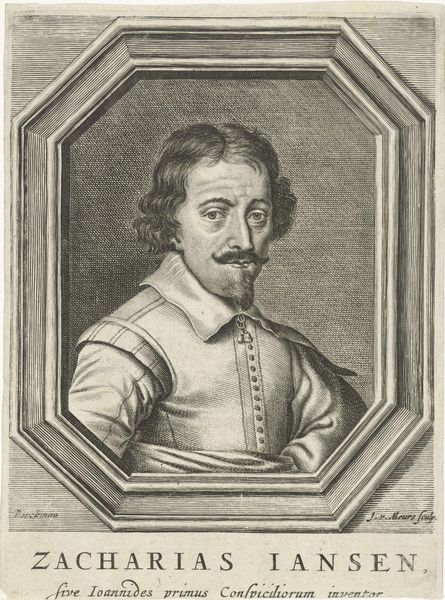
print, engraving
#
portrait
#
baroque
#
dutch-golden-age
# print
#
figuration
#
history-painting
#
engraving
Dimensions: height 162 mm, width 113 mm
Copyright: Rijks Museum: Open Domain
This engraving portrays Ernst Casimir, Count of Nassau-Dietz. Encircling him are inscriptions of his titles, visually cementing his power and nobility within the Dutch Republic. The symbols of authority aren't merely superficial; they are a carefully constructed representation of his status. Now, consider the oval frame. This shape has ancient roots, often seen in Roman portraiture and funerary art to symbolize eternity and cyclical time. It is also frequently associated with the 'imago clipeata', a Roman tradition of portraying individuals within a circular or oval shield, celebrating ancestors and commemorating the deceased. This motif appears in different contexts throughout history, from ancient coins to Renaissance medals, each time evoking a sense of continuity and legacy. The choice of the oval is no accident; it engages viewers on a deep, subconscious level. The past is not a linear progression but rather a series of recurring patterns, resurfacing, evolving, and taking on new meanings in different historical contexts.
Comments
No comments
Be the first to comment and join the conversation on the ultimate creative platform.
